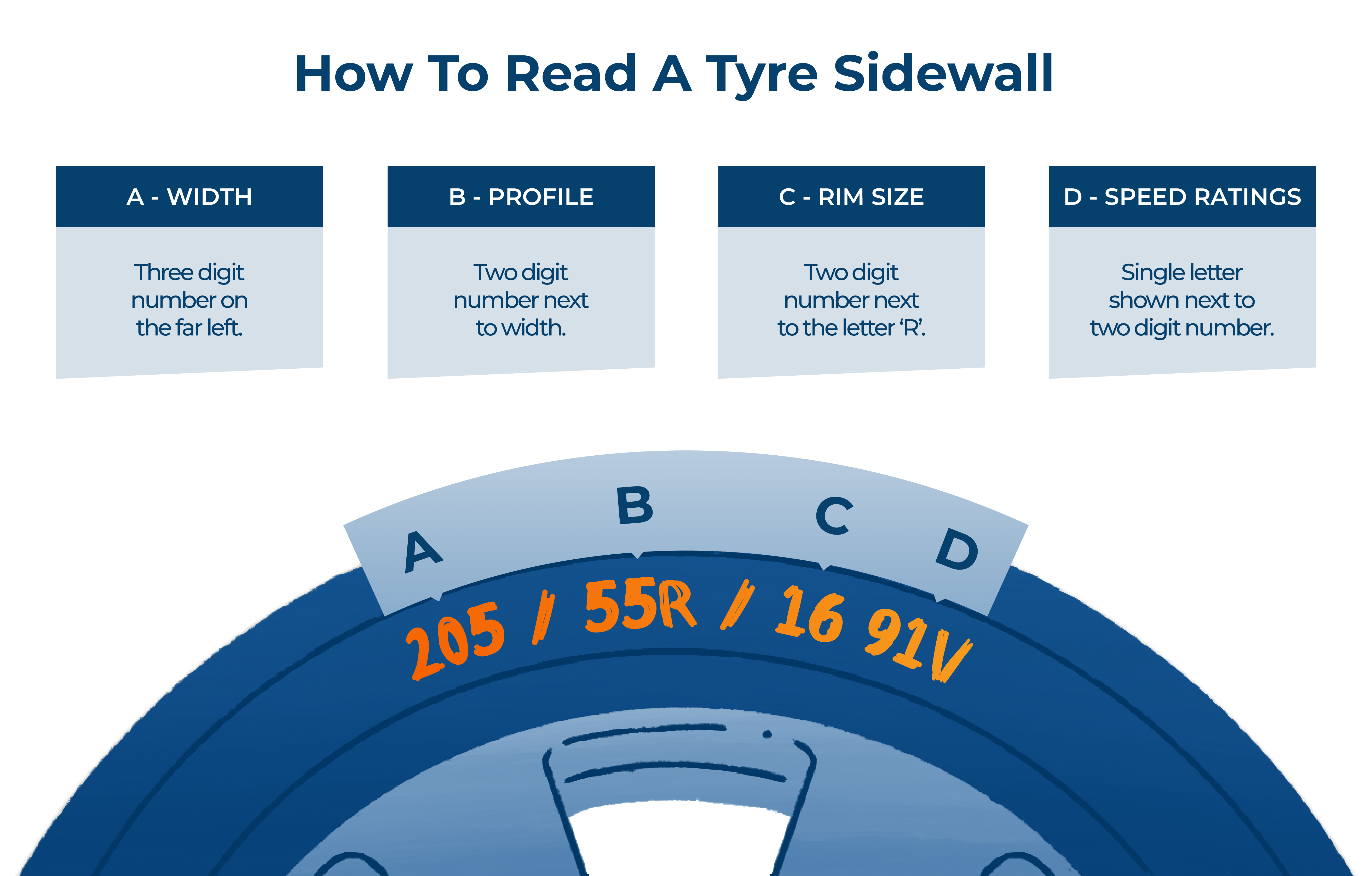Whether you drive a car or a van, you don’t want to be driving along on tyres that are not built to carry the weight of your vehicle.
You could do some serious damage to your vehicle by driving on tyres that are the wrong size, and this in turn can pose serious safety risks for you.
That’s why it’s so important that you work out the correct size of tyre for your vehicle, so that you keep safe on the roads.
Learn how to find out your tyre size and know when it’s time to make a change by reading this article.
Page Contents
Where Can I Find My Tyre Size?
There are a few ways of finding out your tyre size.
You can refer to your vehicle’s handbook, or the sticker on the driver’s side door, as these should tell you the correct size of tyres to use.
If you want to find out the size of tyres you are currently using, then you can inspect the tyres themselves.
The side of the tyre – known as the sidewall – is embossed with information about your tyres, presented in a series of letters and numbers.
You can also find the maximum load capacity and inflation pressure your vehicle is allowed to reach here.
Whilst this can seem confusing at first, it is actually quite straightforward to understand.

The first three numbers refer to the width of the tyre, and the two numbers that follow the slash can tell you the height of the tyre. Both of these are in millimetres.
The letter that follows this refers to the type of tyre you own. Usually this letter will be ‘R’ for radial, as this is the type of tyre that is most commonly used. The letter could also be ‘B’ for bias belt, or ‘D’ for diagonal, if these tyres have been built differently.
The next two numbers are the diameter of the tyre’s inner rim in inches, which can tell you how wide your tyre is across its centre. The final two digits will tell you the load index of your vehicle. The concluding letter can tell you the speed rating for your vehicle. This is the top speed that you can drive at before your tyre becomes unsafe.
If your tyre speed rating is lower than expected, this can result in your car insurance being invalidated.
Using tyres with a lower speed rating than is necessary for your vehicle can also lead to tyre blowout if the tyres overheat whilst travelling at speed.
On the other hand, driving with tyres that have a higher speed rating than your car needs can cause them to struggle in the colder months.
That’s why it is so important to make sure that you choose tyres which are genuinely suited to your vehicle’s requirements.
It may not be illegal to fit your car with tyres that have a lower speed rating, but this isn’t a good idea - it can cause steering problems, and possibly even tyre failure.
Refer to your owner’s manual to find the recommended speed rating for your vehicle.
It is important to note that some tyres have markings which indicate they are specifically designed to be used in a certain vehicle.
An OE marking - which stands for original equipment - signifies that this particular tyre was designed by a tyre manufacturer to be fitted as standard, as supported by your vehicle manufacturer.
If your vehicle was first fitted with OE marked tyres, then it would be advisable that you should continue to replace your tyres with these OE marked tyres to optimise your vehicle’s performance.
OE marked tyres can relate to the specific model of car you drive, not just the manufacturer itself. To give just two examples, VOL represents Volvo, and HN represents Hyundai.
With all this in mind, you can choose tyres which meet the specifications of your vehicle. If you are still uncertain as to the tyre size your vehicle requires, you can book a free tyre check and find this out today.
What Happens if My Tyres Are the Wrong Size?
If your tyres are the wrong size, this can cause serious damage to your vehicle.
Tyres that are too wide may come into contact with the strut and spring and damage your suspension.
Meanwhile, if you increase the tyre sidewall, you run the risk of your tyre coming into contact with the fender liner when travelling at speed.
That’s why it is always best to speak to a professional mechanic if you have any plans to change the size of your tyres, especially if you were planning on going above or below the tyre size recommendation in your owner's manual.
Speak to a professional garage before you change your tyre size, so that they can advise you on what is best for your vehicle.
For your safety, it is highly advisable that you choose four of the same kind of tyres for your vehicle, which you should have fitted in pairs.
If you don’t match your tyres, you run the risk of having less control of your handling, steering, and you increase the chance of your vehicle becoming unstable to drive.
You could even do damage to the wheel bearings and the clutch – which is incredibly costly to replace!
Should I Change My Tyres?
By law, your tyre tread must be no less than 1.6mm, so it is a good idea to think about replacing them before they reach this stage.
It may be time to change your tyres if:
- Your vehicle’s performance is flagging
- You have noticed cracks in the sidewall
- You have noticed some general tyre wear and tear
- Your tyres are 5 years old
- Your tyres vibrate when you drive
- Your tyres are making noises when you drive
Remember, you should always change tyres in pairs, as driving a car with differing tyre ages can lead to unequal rolling resistance and make it harder for your tyres to gain traction on the road.








No comments yet
Leave a comment